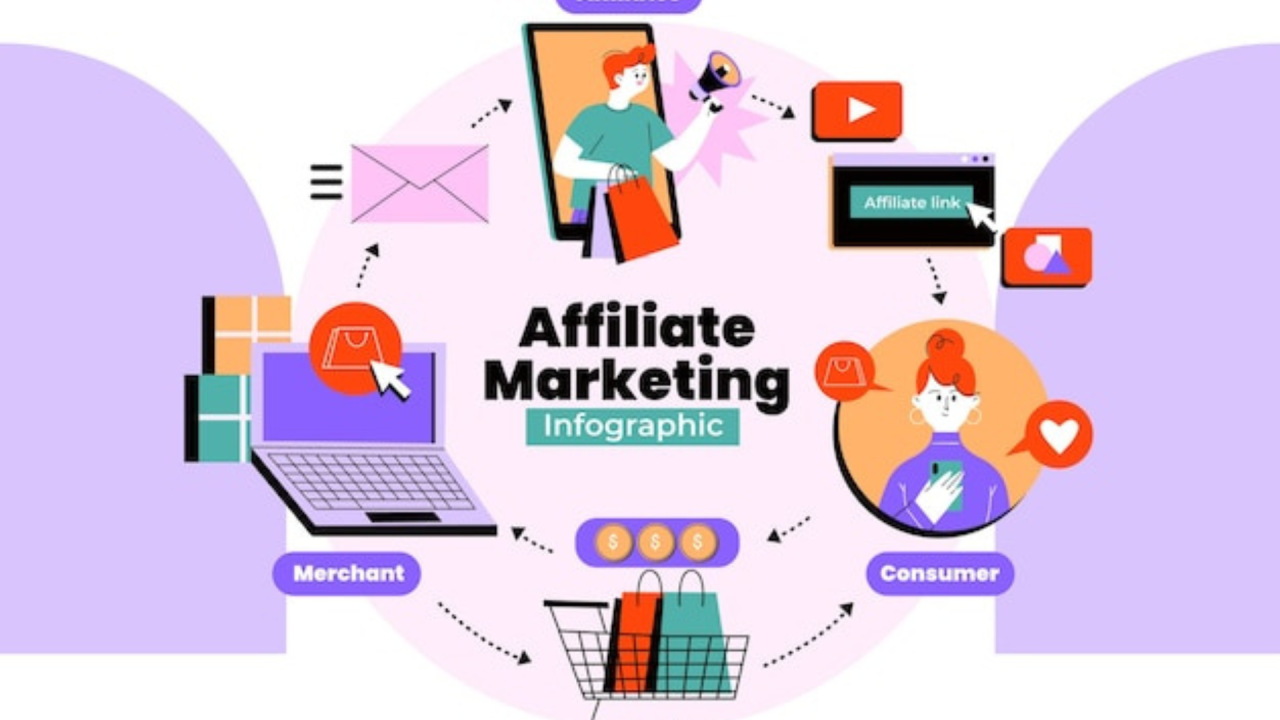Affiliate marketing is a lucrative way to generate passive income by promoting products or services and earning commissions on sales. However, success requires strategic planning, audience engagement, and effective marketing techniques. This guide explores the best affiliate marketing strategies to help you maximize your earnings and build a sustainable income stream.
1. Choose the Right Affiliate Programs

Selecting the right affiliate program is crucial for success. Consider the following factors:
- Commission Structure: Look for programs with competitive commission rates.
- Product Relevance: Promote products aligned with your niche and audience interests.
- Reputation and Reliability: Partner with reputable brands that provide quality products and reliable payments.
- Cookie Duration: Longer cookie durations mean more time to earn commissions.
2. Select a Profitable Niche
Focusing on a specific niche helps you establish authority and attract a targeted audience. Popular niches include:
- Health & Wellness
- Personal Finance
- Technology & Gadgets
- Digital Marketing
- Travel & Lifestyle
- Online Education
3. Build a High-Quality Website or Blog
A well-structured website or blog is the foundation of a successful affiliate marketing business. Key elements include:
- User-Friendly Design: Ensure easy navigation and fast loading speeds.
- SEO Optimization: Use keywords, meta tags, and high-quality content to rank on search engines.
- Valuable Content: Create informative and engaging articles, product reviews, and comparison guides.
4. Create High-Converting Content
Content marketing plays a vital role in affiliate marketing success. Effective content types include:
- Product Reviews: Honest and detailed product reviews build trust and encourage conversions.
- Comparison Articles: Compare multiple products to help users make informed decisions.
- Tutorials and How-To Guides: Demonstrate how to use products and highlight their benefits.
- Case Studies: Share real-life success stories showcasing product effectiveness.
5. Leverage SEO for Organic Traffic

Search Engine Optimization (SEO) is essential for attracting organic traffic to your affiliate site. Key SEO strategies include:
- Keyword Research: Target high-intent keywords related to affiliate products.
- On-Page Optimization: Optimize meta titles, descriptions, headings, and images.
- Backlink Building: Acquire high-quality backlinks to boost domain authority.
- Internal Linking: Connect relevant articles to enhance user experience and SEO ranking.
6. Utilize Email Marketing
Building an email list allows you to nurture leads and drive affiliate sales. Effective email marketing strategies include:
- Lead Magnets: Offer free eBooks, checklists, or courses in exchange for email signups.
- Automated Email Sequences: Send follow-up emails, product recommendations, and promotional offers.
- Personalization: Segment your audience and tailor content to their interests.
7. Leverage Social Media Marketing
Social media platforms help expand your reach and drive traffic to affiliate links. Best practices include:
- Choose the Right Platform: Focus on platforms where your audience is most active (e.g., Instagram, YouTube, Facebook, TikTok, or Pinterest).
- Engaging Content: Create videos, infographics, and interactive posts to boost engagement.
- Influencer Collaborations: Partner with influencers to gain credibility and exposure.
8. Implement Paid Advertising Strategies
Paid advertising can accelerate affiliate marketing earnings when executed correctly. Popular methods include:
- Google Ads: Target high-intent keywords for search ads.
- Facebook & Instagram Ads: Use targeted campaigns to reach specific demographics.
- YouTube Ads: Promote affiliate products via video ads.
- Native Advertising: Use platforms like Taboola and Outbrain to distribute content.
9. Track Performance and Optimize Strategies

Regularly monitoring key performance metrics ensures ongoing success. Important analytics tools include:
- Google Analytics: Track website traffic and user behavior.
- Affiliate Dashboard: Analyze clicks, conversions, and commissions.
- A/B Testing: Test different headlines, CTAs, and content formats to improve performance.
10. Stay Updated and Adapt to Trends
The affiliate marketing landscape evolves constantly. Keep up with industry trends by:
- Following Affiliate Marketing Blogs: Learn from top marketers and industry leaders.
- Joining Affiliate Networks & Forums: Engage with communities for insights and support.
- Experimenting with New Strategies: Test emerging trends like AI-driven marketing and voice search optimization.
Also Read : The Ultimate Guide To Email Marketing For Higher Conversions
Conclusion
Maximizing affiliate marketing earnings requires strategic planning, high-quality content, and audience engagement. By selecting the right programs, leveraging SEO and social media, and continuously optimizing your approach, you can build a profitable and sustainable affiliate marketing business.
FAQs
1. How long does it take to make money from affiliate marketing?
It varies based on niche, strategy, and effort. Some marketers see results within months, while others take longer to build traction.
2. Do I need a website for affiliate marketing?
While a website is beneficial, you can also use social media, YouTube, or email marketing to promote affiliate products.
3. Can I do affiliate marketing without investing money?
Yes, you can start with organic methods like blogging and social media. However, paid advertising can accelerate results.
4. What is the best affiliate marketing platform?
Popular platforms include Amazon Associates, ShareASale, CJ Affiliate, Rakuten, and ClickBank.
5. How do I increase my affiliate conversion rate?
Optimize content, use compelling CTAs, target the right audience, and build trust with transparent product recommendations.

